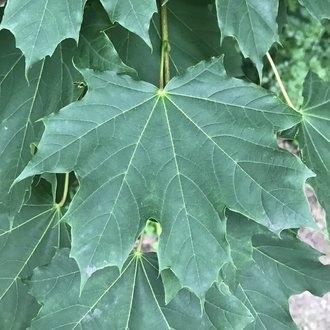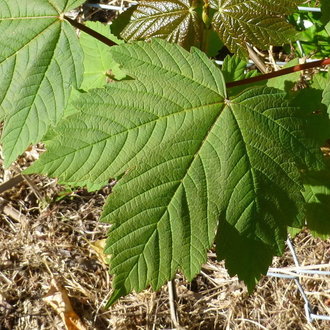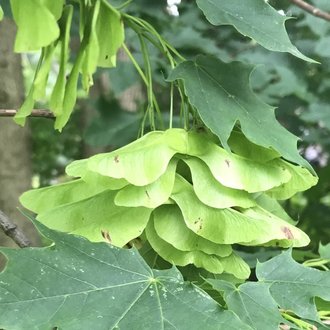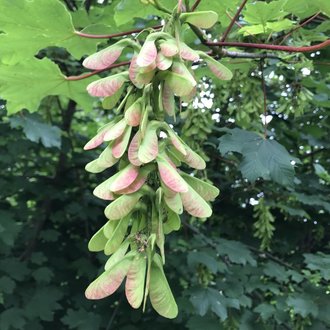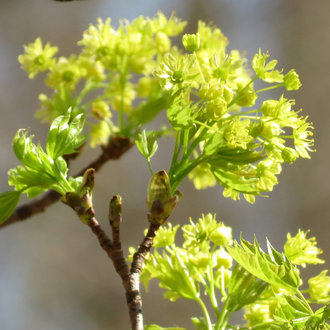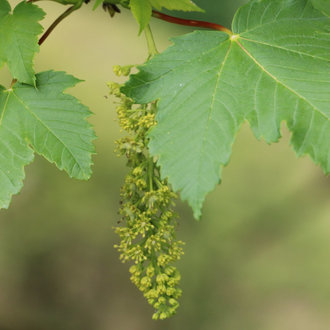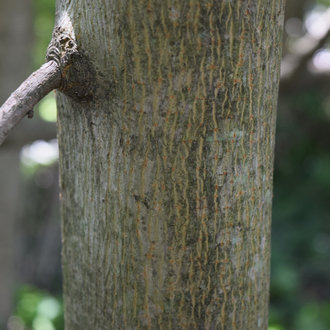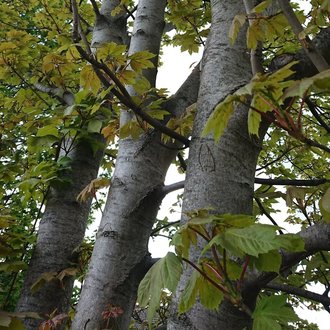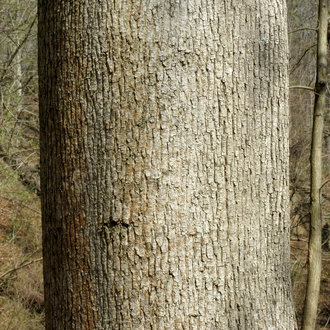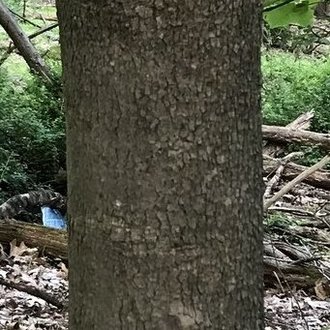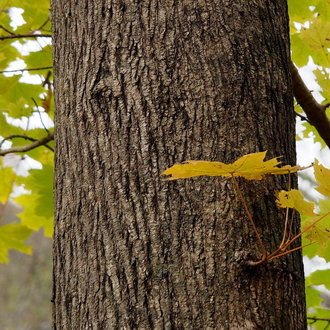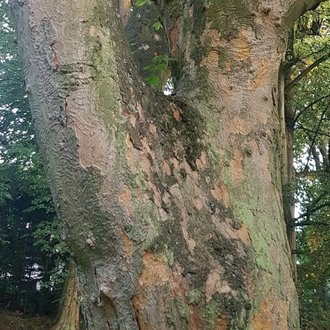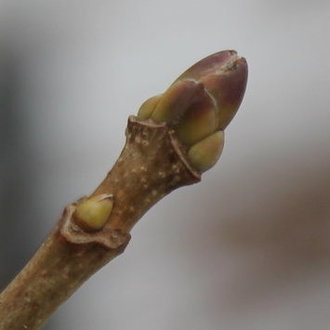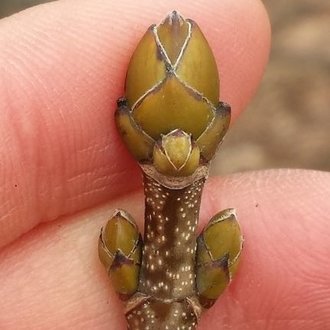Norway Maple vs Sycamore Maple
These two species of maple are sometimes confused. In North America, both are more common around urban areas, although Norway maple is more common. The leaf shape can be similar, but is easily distinguished by texture and margin structure. The bark on young trees is similarly smooth, but on older trees is quite distinct.
Norway Maple (Acer platanoides) | Sycamore Maple (Acer pseudoplatanus) |
A shade-tolerant tree native to Europe and Western Asia. Widely used as a landscape plant, and has become invasive in North America in the mid-Atlantic, Midwest, and Pacific Northwest. | A large maple with invasive potential. In the UK, referred to only as "sycamore"; in the U.S. this name is reserved for the American sycamore and other trees of the Platanus genus. |
Leaves have fewer side veins; veins look lighter than the rest of the leaf. The tips of each lobe are pointed, but the leaf margins are not serrated between points. Leaf surface looks smoother and often looks waxy. Photo © Andrew Conboy, CC BY 4.0. | Leaves have numerous, prominent side veins which look darker than the rest of the leaf, giving the leaf a ridged appearance. Leaf margins are serrated. Photo © Murray NZ, CC BY 4.0. |
Samaras hang in clusters roughly at similar height. Samaras oriented more horizontally, with the bottom of each samara close to horizontal, and are usually green, turning pale beige when ripe. Photo © Andrew Conboy, CC BY 4.0. | Samaras in long, dangling clusters that extend quite far vertically. Samaras oriented at roughly a 45 degree angle with the horizontal, and often have a reddish tinge. Photo © jhubley, Public Domain. |
Flowers in an upright cluster that is more-or-less round. Trees are early in the process of leafing out while they bloom. Photo © Katja Schulz, CC BY 4.0. | Flowers in a dangling cluster much longer than it is wide. Leaves are fully-formed by the time trees bloom. Photo © Thraen, CC BY-SA 4.0. |
Bark on young trees has subtle, vertically-oriented features which will eventually develop into ridges at maturity. Photo © , CC BY-SA 4.0. | Bark on young trees has more horizontally-oriented features and no sign of vertical ridges forming. Photo © Victoria J. Burton, CC BY 4.0. |
At intermediate ages, bark begins developing fine vertical ridges. Photo © Katja Schulz, CC BY 4.0. | At intermediate ages, bark begins developing a scaly texture. Photo © Andrew Conboy, CC BY 4.0. |
Bark of mature trees has fine, regularly-spaced vertical ridges and looks darker from a distance. Photo © Katja Schulz, CC BY 4.0. | Bark of mature trees lacks vertical ridges, but sometimes flakes off, revealing pale reddish color underneath, giving a mottled appearance reminiscent of that on plane trees or American sycamores. Photo © Tomas P., Public Domain. |
Terminal buds reddish-brown, slightly narrower, fewer bud scales visible. Photo © Quinten Wiegersma, CC BY 4.0. | Terminal buds yellowish-green, slightly wider, more bud scales visible. Photo © Zihao Wang, CC BY 4.0. |
References & External Resources
These short lists show only links helpful for ID. For a complete list of references and resources also covering other aspects of ecology, visit the links section of the full article on each plant, which is the first entry here.



